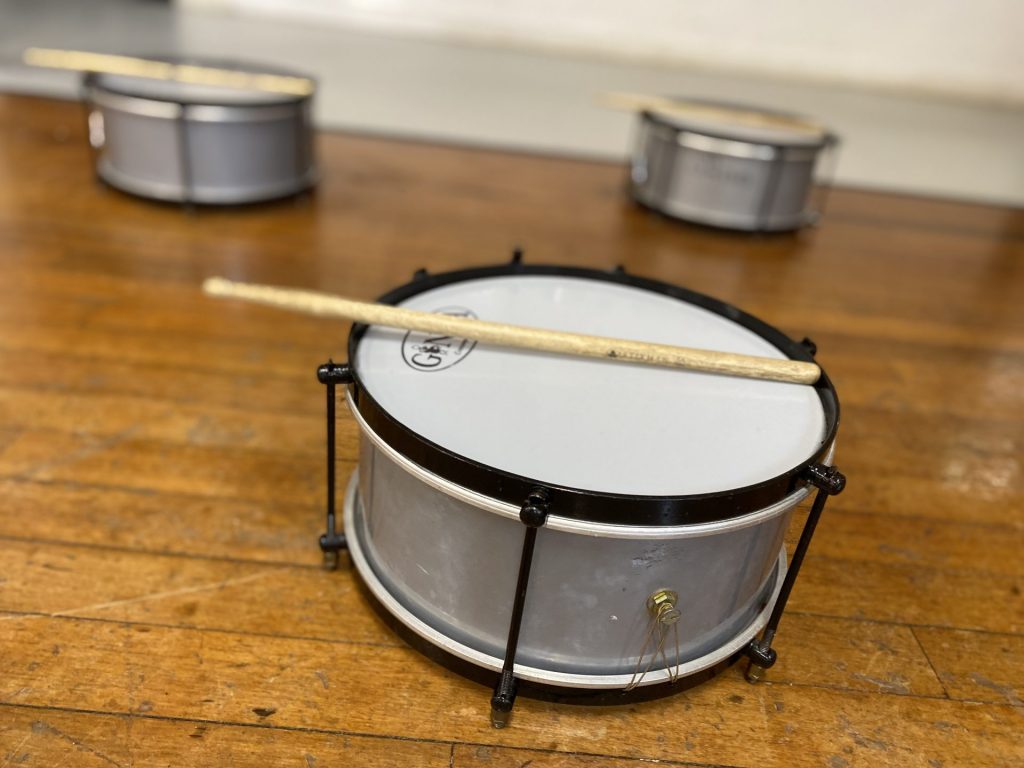
Here’s some drumming tips to help you get gig ready when you join the band.
Like any other music, practice slowly and practice often! It’ll take a while to reach gigging level but it all really depends on your levels of commitment and practice.
No matter what instrument you play in the band, practice the samba drum rudiments. Being able to play things like clavé will massively help no matter what your rhythmic focus is for a gig.
Immerse yourself in the music! Read up. Watch footage. Find out about the culture behind the music and why certain bits are important.
Groove! Keep key rhythms and sections going for a long time. Samba drumming can be as much about vibe as it is about saying short, important phrases.
As you play in the band, keep your head up, wait for the signal, then the count of four from the caller. All songs and the grooves within them are signalled by a hand action from the caller at the front. The caller will likely show the four bars to go, then give a further count of four crotchets (single beats on the pulse) and then expect to go into the new part in a song or jam.
Look out for calls that do and do not include your instrument section!
Songs vs. Grooves. Often, there are recorded whole songs but then when live, these songs can be often jammed out. This means that a groove can just continue for ages and a song can have its parts rearranged. This might depend on what the gig is like (i.e. Play a short one if a small crowd).
Keep stepping to keep pulse… First big step to right should mimic bass 1, then the mini left footed step to the right is bass 2 (step, tap). Therefore the big step to the left is bass 1 again and mini right footed step on the left is bass 2 (step, tap). In other words, big steps to right and left is bass 1 (bim!) and the mini step in between is bass 2 (bom!).
Once songs and grooves are learnt, don’t forget you’ve basically two different gigs in which to master them: static and procession. A procession can often be harder as you’ve got to manage roads and uneven ground whilst keeping the line formation in the band and play in time!
